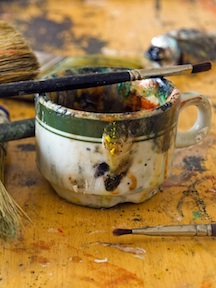By Caroline Eng
With the opening of Johns Hopkins University in 1876, the United States saw its first research university. Unlike existing institutions of the time, Johns Hopkins was a school dedicated to creating new knowledge. For the first time, students of science conducted experiments and tested their own hypotheses. This model endures to this day. It is widespread to the extent that we take for granted that it has not always been the standard.
The Johns Hopkins model draws on the fact that science is a process. Science is about observation, experimentation, and ultimately, discovery. Laboratory research puts that process in the physical hands of the students, allowing them to live through what they have read about in books.
At Sarah Lawrence College, 207 miles away, film students in 2016 participate in “tech labs” to fulfill their major requirements. According to one student, in these lab periods, they learn how to use editing software, cameras, and lights. In one “lab-based” class called “Light and Shadow,” students do hands-on work to create a set, light it, and shoot a scene in it. This work has all of the structure of a science experiment. It is a process-oriented discipline that requires both mental and physical learning.
The concept of a “lab” has no concrete definition. For example, theater students at Fordham University participate in “lab hours.” Like the previous example, these labs involve time outside of class doing hands-on work. However, the distinction lies in the cohesion of the education. These lab hours – running the box office or helping to build a set – do not run parallel to classwork. They are not ways to experiment and refine an idea learned from books. However, like scientific disciplines, theatre is process-oriented. “Tech weeks” for theatre students involve hours of experimenting with the combination of lights, sound, set, and other elements to create a cohesive piece of art. This process is like working in a laboratory in which students work towards a result through experimentation.
Herein lies the parallel between the sciences and the arts. Both require, or benefit from, “laboratories” in which to test and develop their ideas. Therefore, these disciplines, which too often claim to be opposites, are structured in the same way. A tangible manifestation of these similarities is that they are taught in the same way: with classroom time and laboratory time. Students of both art and science must be able to test their ideas and to shape their craft with their hands in order to understand it.
That arts programs began to require lab commitments, and called them “labs,” implies that the structure already existed. The precedent set by Johns Hopkins University may have flowed into arts programs as they grew over the centuries, helped along by the close contact that liberal arts universities fosters between separate disciplines. Liberal arts universities are unique in their ability to reveal these striking similarities by placing art and science classrooms side by side. The interplay between these two disciplines, which seem entirely separate, reveals their underlying cohesion.
Johns Hopkins opened because there was something missing from higher education as it stood in the United States. That is how education evolves. It is a fluid and continuous conversation about how to best explore the disciplines to which scholars have devoted their lives. Sometimes, influences for that conversation come from unexpected places. The wisdom a “college of arts and sciences” is that fine art and hard science, however different their vocabularies may be, have a wealth of possibilities to share with one another.
Caroline Eng is a junior at Fordham College at Lincoln Center majoring in English. Fordham is home to the Tau of New York Chapter of Phi Beta Kappa.




